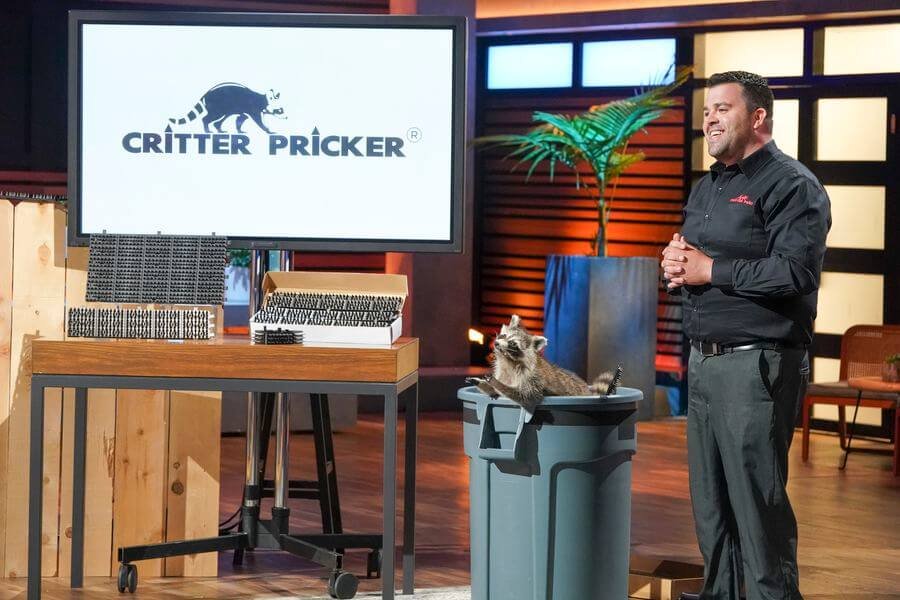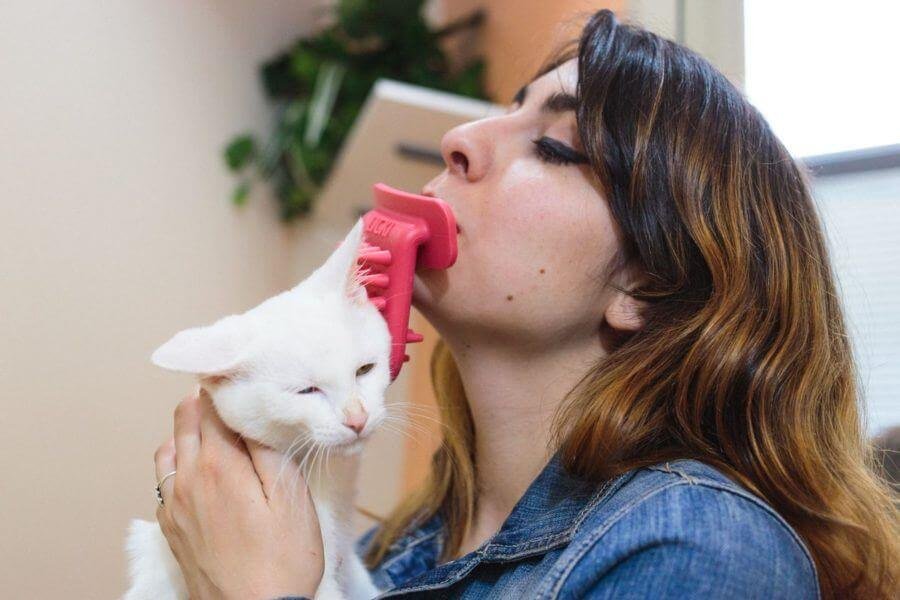Let’s start with some hard truth: Shark Tank deals look glamorous, but not every handshake on TV leads to a success story. They got a deal doesn’t mean they made it. Few founders get to cruise on a wave of Shark fame, but most fight for every dollar long after the cameras go dark. Critter Pricker? That’s a front-row lesson in what the business grind actually feels like, both on camera and off.
Contents
ToggleJoe Balistreri — The Guy Behind Critter Pricker
A lot of people think flashy Shark Tank products come from inventors in big labs. Not this one. Joe Balistreri is the definition of a scrappy founder. Before he was out pitching the Sharks, he was working pest control, busting his hump to stop raccoons from tearing up people’s trash cans and pools. He saw the problem first-hand and built Critter Pricker out of pure necessity. There’s no deep-pocketed team behind him, no trust fund. Just a guy who got tired of watching raccoons wreck people’s property — and decided to solve it with his own two hands.
What’s the Critter Pricker Promise, Anyway?
Here’s the deal: raccoons are smart, stubborn, and have more hustle than some founders I’ve met. Most solutions are useless or cruel. Critter Pricker is a set of interlocking plastic strips with spikes — not sharp enough to wound, but uncomfortable enough that animals steer clear. You snap them together, lay them out by the trash, pool, or wherever raccoons (and even nosy cats) are a problem. The whole point? Deter animals humanely and cheaply, without poison, traps, or drama. It’s simple, which is sometimes what works best.

Inside the Shark Tank: The Pitch and the Play
Joe walked into Season 11 ready to hustle. He asked for $115,000 in exchange for 15% of Critter Pricker. No crazy valuation, no fancy tech — just a pest guy pitching his straightforward fix to a real-world problem. He showed off sales: $80,000 in the year before filming. Not mind-blowing, but for homemade pest control gear, it’s respectable.
He positioned Critter Pricker as a humane upgrade over traps and poison — showing how the product used raccoons’ sensitive paws against them, with zero blood or broken bones. The Sharks got hands-on with the prototype. Joe didn’t overpromise, didn’t try to sell it as the next Apple. That’s actually smart. Too many founders blow smoke and get roasted.
Did Anyone Bite, or Did the Sharks Bail?
Let’s get into the tension. Barbara Corcoran, Daymond John, and Mark Cuban all passed quick. Why? They smelled legal headache — worried kids or pets would get spiked and lawyers would circle. Real talk: legal risk will kill a deal faster than bad sales.
But Kevin O’Leary — Mr. Wonderful himself — saw a shot. He threw out a classic Sharky offer: the $115,000, but for 15% equity and a $2.50 royalty on every unit. That perpetual royalty is classic O’Leary — he wants his money back, then keeps taking a cut forever. Some call that greedy. I call it protective. Joe took the deal. On TV, anyway.

The Shark Tank Trap: Did That Deal Even Close?
Here’s what most viewers don’t see: TV deals fall apart all the time. The handshake is just for drama. SharkWorth reports the deal with O’Leary didn’t survive due diligence. Maybe Kevin saw too much risk, or maybe Critter Pricker’s market was too niche. Either way, Kevin didn’t put a cent in after the cameras stopped.
But — and here’s where this story matters — Joe didn’t quit. Critter Pricker didn’t fade like some Shark Tank walking dead. It’s still standing, still shipping, and still carving out sales.
Critter Pricker Net Worth and Actual Sales Numbers
Want the straight numbers? Company value sits around $700,000 by post-show estimates — not the moon, but way above life support. Annual sales sit under seven figures, typically in the $200,000-$900,000 range. It’s not a unicorn, but it’s not a ghost.
Each Critter Pricker sells for $27.99 to $32.99, with a manufacturing cost of about $8 per unit. That’s good margin, and in physical products, you have to protect your margin like your life depends on it. You’re not going to flip Critter Pricker for a nine-figure exit, but you’re also not working for free. Sometimes, the grind is just about stacking those smaller wins.
What Happened AFTER Shark Tank Glory?
This is the part that matters. Shark Tank fame is a sugar rush. But what happens when you come down? Joe didn’t get Kevin’s cash, but he got exposure. Critter Pricker held its own, capitalizing on that Shark Tank bump to juice sales number and cling to steady customers.
The company hasn’t hit mass retail — you’re not finding Critter Pricker at every Home Depot. But it’s up on Amazon, plus the official website, pulling in slow, steady sales. That’s more than a lot of Shark Tank products can say after the buzz fades. No sudden product line expansion, no wild pivots — just keeping the brand alive and carving out a niche for people sick of raccoon hijinks.
Is Critter Pricker Still Evolving? Or Just Holding On?
Has Critter Pricker innovated since Shark Tank? Not much, and that’s both good and bad. On one hand, a founder sticking to his guns shows discipline. If the core product works and you’ve got fit, every innovation can just be a distraction.
But there’s risk in standing still. Competition in pest prevention is brutal. There are other spike mats, other deterrents, and some of them are louder on marketing. If Joe wants to scale, he’s going to need a better sales funnel, bolder partnerships, or a new twist on the original product. For now, though, Critter Pricker is still selling strong enough to stay in the game.
My Take: Wins, Fails, and Lessons for Entrepreneurs
Here’s where we get real. What did Critter Pricker do right? Joe understood his customer and didn’t let rejection from the Sharks end his story. No ego, no drama — just pressing on with bootstrapped hustle. He rode the Shark Tank wave to real customers and kept the lights on.
Potential fails? The liability risks scared off serious investors and probably held back bigger deals. Safety should never be an afterthought — if kids or pets could get hurt, you need ironclad answers. Also, the brand never really broke out because it didn’t expand fast or wide. That’s a choice, and it keeps you small.
But the bottom line? Joe proved you don’t need a Shark in your corner to build a real, cash-flowing business. He got his product into the wild, made money, and kept his company alive when a thousand others faded.
FAQs: Everything You Need to Know About Critter Pricker (Fast Hits)
Is Critter Pricker still in business?
Yes. As of 2024, they’re still operating. Buy on their official site or Amazon. No vaporware here.
Did Kevin O’Leary’s deal really go through?
Nope. The Shark Tank handshake never made it to real cash. Not unusual for the show.
Where can I buy Critter Pricker now?
The product is available on the company’s website and on Amazon for quick delivery.
How much does Critter Pricker cost?
Expect to pay between $27.99 and $32.99 per unit.
Is Critter Pricker safe for pets and kids?
Mostly. The spikes aren’t sharp enough to injure, but you still need to keep an eye out — especially with little kids.
What’s Critter Pricker’s net worth right now?
Rough estimate: $700,000, based on private sales and Shark Tank valuation.
Did Shark Tank help boost Critter Pricker’s sales?
Definitely. Exposure from the show gave Critter Pricker a big bump, even without a closed deal.
Are there better alternatives?
Depends. There are plenty of animal deterrents, but Critter Pricker is one of the few that’s simple, modular, and not outright nasty to wildlife.
The Bottom Line: Do You Need a Shark to Survive?
Here’s the playbook lesson: Getting a Shark Tank deal is good PR — but hustle, product fit, and keeping your customers matter way more. Joe and Critter Pricker didn’t score a cash infusion, but they did something better: they proved you don’t have to quit when the pitch room kicks you out.
Want to see more real deal breakdowns? Check out SharkWorth for net worths, updates, and all the fine print the show leaves out.










